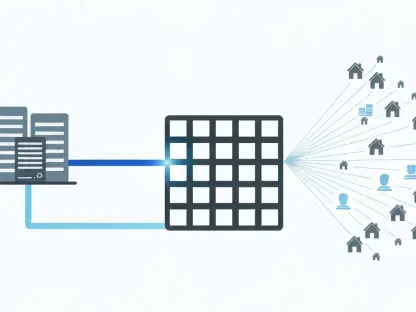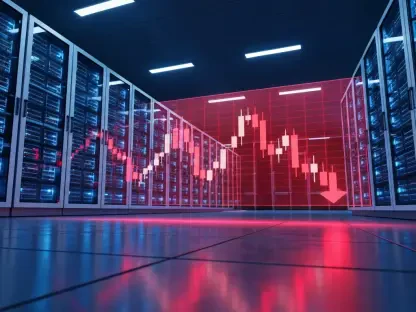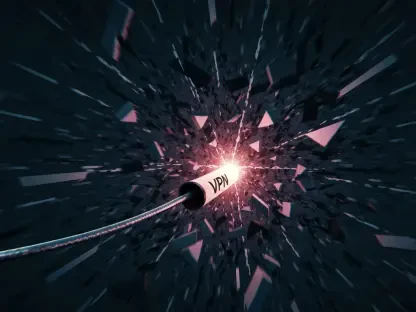Chloe Maraina has carved out a niche as an expert in business intelligence, with a particular interest in crafting visual stories through the analysis of big data. As she guides us through the nuances of blockchain analytics and the evolving landscape of the XRP Ledger, we gain valuable insights into this dynamic domain.
Can you explain what Dune Analytics is and why the integration of XRPL on it is significant?
Dune Analytics is a powerful platform that allows cryptocurrency enthusiasts and analysts to delve into blockchain data, create informative dashboards, and visualize trends. The integration of the XRP Ledger (XRPL) on Dune is significant because it opens up a wealth of data for analysis, enabling users to better understand the behavior and dynamics of this longstanding blockchain. This collaboration can facilitate greater transparency and more informed decision-making within the XRP community.
The XRP Ledger has processed over 4 billion transactions since its launch. What factors contribute to its ability to handle such a high volume of transactions?
Several factors contribute to the XRPL’s ability to handle a high volume of transactions. Its consensus protocol, which doesn’t rely on proof-of-work, enables swift verification and settlement of transactions. This efficiency is crucial for processing large volumes. Moreover, the ledger’s design emphasizes scalability and low-cost transaction processing, both of which are instrumental in accommodating billions of transactions over time.
How has the daily transaction volume on XRPL changed from 2013 to 2025?
The daily transaction volume on XRPL has seen remarkable growth. From a modest 50,000 transactions per day in 2013, it has surged to over 2.2 million daily transactions by 2025. This exponential increase reflects the growing adoption and usage of the XRPL, driven by its capability to execute transactions quickly and reliably, and the broader acceptance of digital currencies and blockchain technologies.
What is the significance of transaction fees on XRPL, and how much have users paid in fees over the years?
Transaction fees on XRPL serve a dual role: they prevent network spam and incentivize honest behavior among validators. Despite being minimal compared to other networks, these fees accumulate and reflect the extensive activity within the ecosystem. To date, users have paid over 14 million XRP in fees, highlighting the ledger’s extensive utilization and its efficient functioning in managing numerous transactions without exorbitant costs.
Can you discuss the growth in the number of accounts on XRPL from 2022 to 2025?
The period from 2022 to 2025 has seen pronounced growth in the number of XRPL accounts, jumping from daily increments of 1-2 thousand new accounts to peaks exceeding 8,000 new users daily. This remarkable acceleration signifies not just increased interest in the ledger, but also widespread adoption and trust in its capabilities. The expanding network suggests a thriving ecosystem where more users are engaging with the XRPL than ever before.
What might be contributing to the acceleration in user growth on XRPL?
Several elements contribute to this rapid growth in user numbers. Innovations within the XRPL, such as its integrated decentralized exchange (DEX) and support for non-fungible token (NFT) minting, attract diverse user groups. Additionally, the widespread interest in cryptocurrency as a financial asset and the XRPL’s reputation for reliability and low fees bolster user adoption. The ecosystem’s continuous evolution with these appealing features supports its expanding user base.
What does the XRPL usage metrics suggest about user engagement?
The XRPL usage metrics indicate robust user engagement and activity within the platform. With over 30,000 people actively using XRPL daily and metrics showing high transaction volumes, it is evident that users find value in the XRPL. Such engagement is indicative of both the utility and trust users place in the ledger—qualities that make it a central hub for varied transactional activities, including payments and DEX trades.
What are the most common transaction types on the XRP Ledger, and how have they evolved over time?
Basic payments remain the most prevalent transaction type on the XRP Ledger, reflecting its primary function as a currency exchange protocol. However, these transactions have grown significantly—from 1.5 million weekly payments in 2023 to 8 million by 2025. Besides payments, DEX trades and NFT minting have become increasingly popular, showcasing the XRPL’s versatile capabilities and users’ growing interest in diverse blockchain applications.
Can you elaborate on the role of XRPL’s integrated DEX and its benefits over other DEXs?
The XRPL’s integrated DEX is one of the oldest and operates without the complexity of smart contracts. Its smart order matching system provides deep liquidity and efficient trading, attracting over 2,300 traders per day. The simplicity and robustness of this DEX set it apart from others by offering seamless, cost-effective trading with substantial support for a wide array of trading pairs, creating competitive advantages in the DEX landscape.
What are Automated Market Makers (AMMs) and how do they function within the XRPL DEX?
Automated Market Makers are decentralized liquidity pools that enable trading on the XRPL DEX without relying on traditional order books. Within the XRPL, AMMs help provide liquidity for trades, allowing users to seamlessly exchange tokens by adjusting prices based on supply and demand—an innovative mechanism that enhances trading efficiency. The presence of over 20,000 AMM pools handling significant XRP trading volumes exemplifies their role in maintaining market liquidity.
How does the aggregate volume of XRP in DEX trades and AMM pools reflect on XRPL’s liquidity?
The substantial aggregate volume of XRP in DEX trades and AMM pools highlights XRPL’s deep liquidity and its capacity to support extensive trading activities. With 384 million+ and 350 million+ XRP traded respectively in these pools, it suggests strong liquidity management and user confidence in executing large-scale trades without adversities like price slippage. This liquidity is fundamental for sustaining high trading activity and ensures reliable transaction execution across the ledger.
What role do DEX trades and NFT minting play in XRPL’s ecosystem?
DEX trades and NFT minting play pivotal roles in creating an expanded, multifaceted XRPL ecosystem. These functions increase the ledger’s versatility and attract a spectrum of users interested in diverse financial operations. DEX trades cater to those seeking efficient and low-cost trading alternatives, while NFT minting embraces the creative and digital asset sectors, underscoring XRPL’s adaptability and capacity to serve various market segments.
What implications does the launch of tokenized US Treasuries on XRPL have for the future of finance and blockchain technology?
The introduction of tokenized US Treasuries on XRPL signifies a milestone in the convergence of blockchain technology with traditional financial instruments. This move has profound implications for the future of finance, offering enhanced accessibility, transparency, and liquidity for government-backed assets. It potentially transforms how Treasuries are traded and managed, showcasing blockchain’s ability to innovate and streamline financial operations on a global scale.
Do you have any advice for our readers?
For those navigating the ever-evolving blockchain landscape, staying informed is key. Engage with platforms like Dune to leverage data for making informed decisions. Embrace learning opportunities and remain open to new developments, especially in areas like decentralized finance and tokenization, which are poised to redefine traditional financial paradigms. Always approach new technologies with an analytical mindset to discern their potential impact and benefits.









